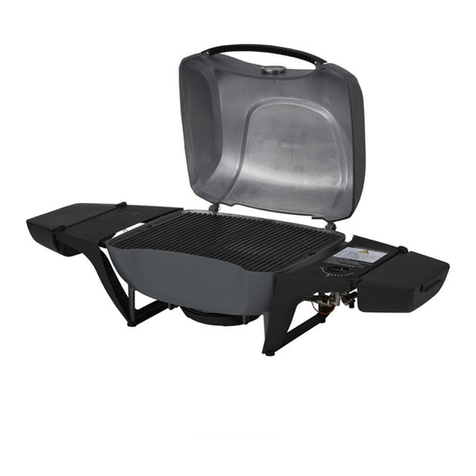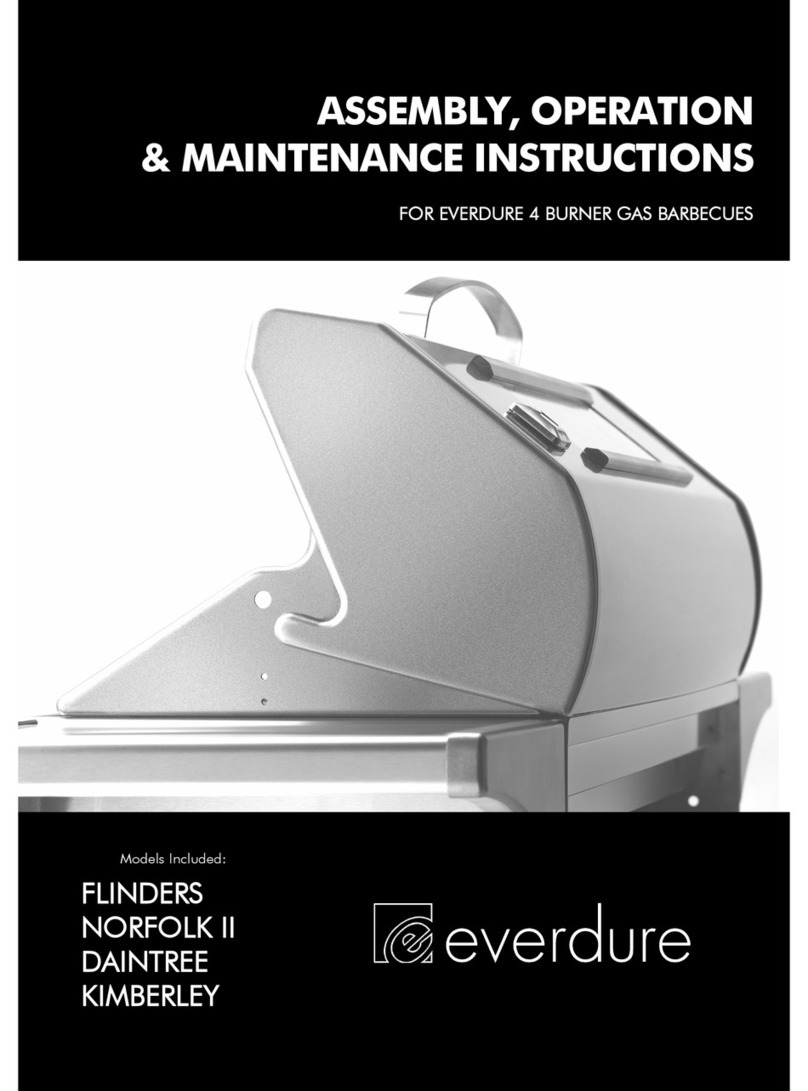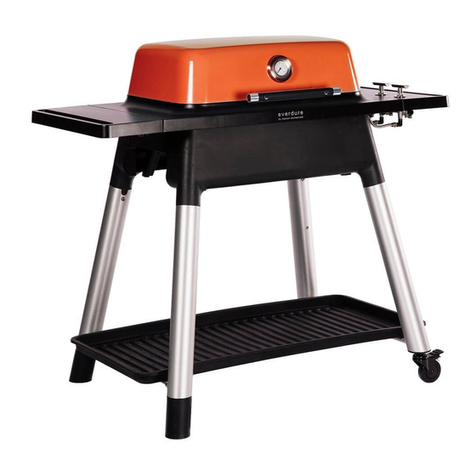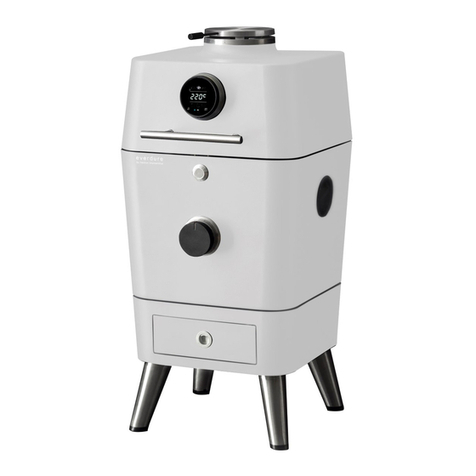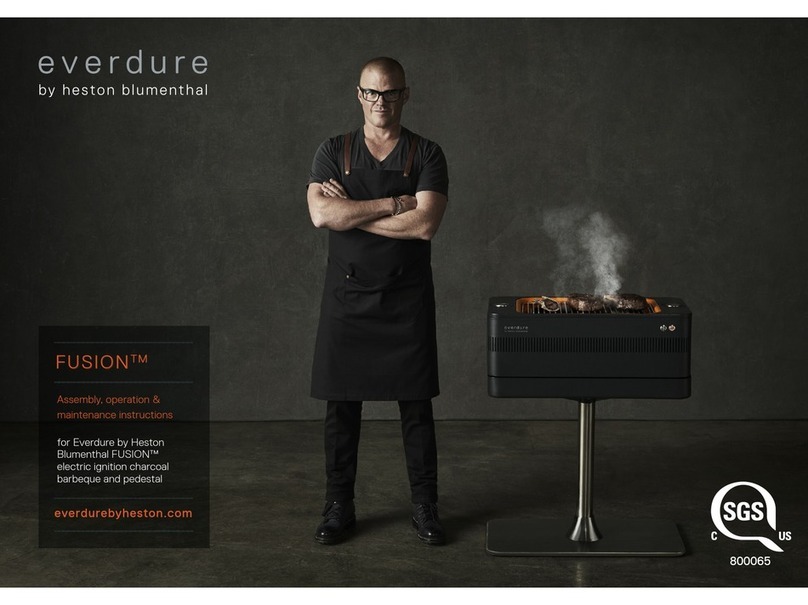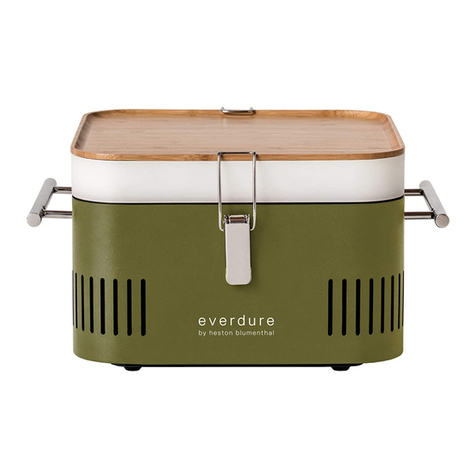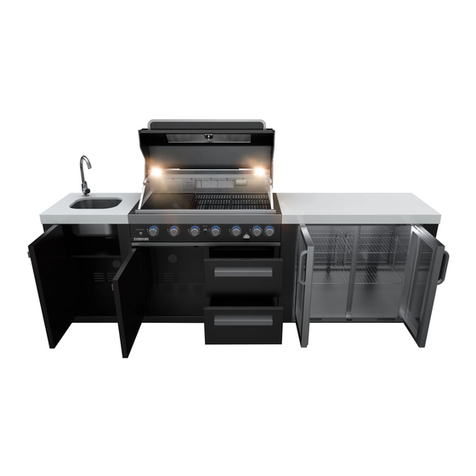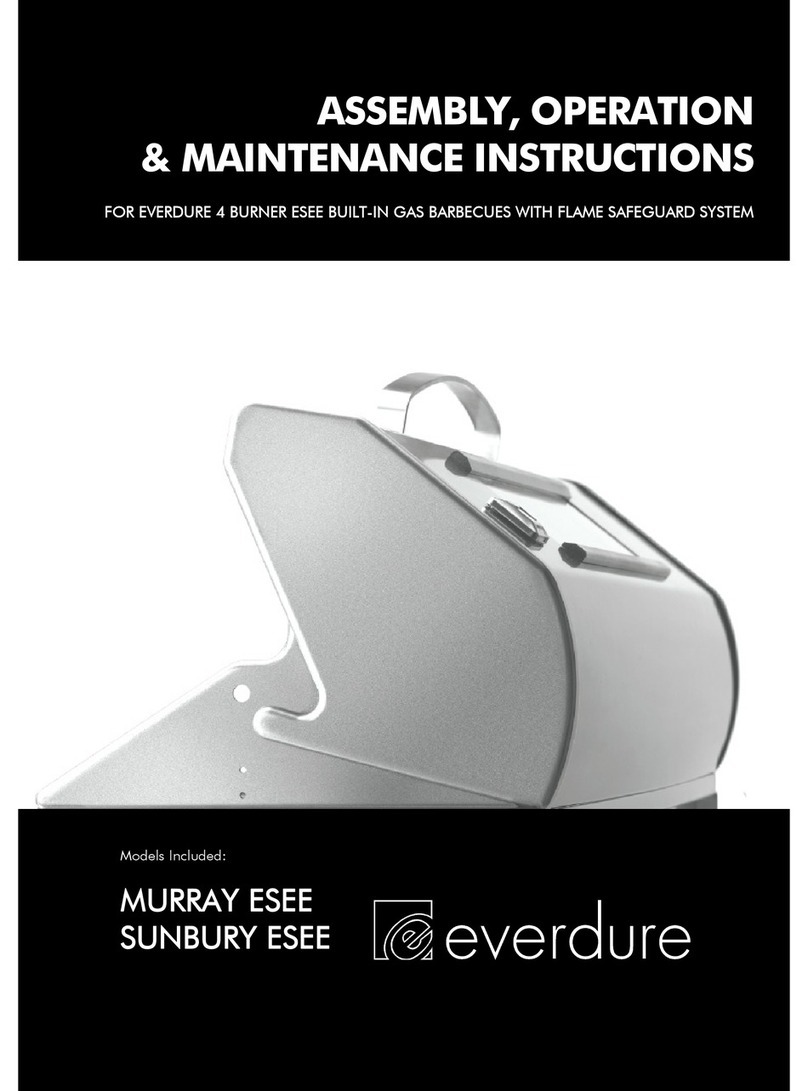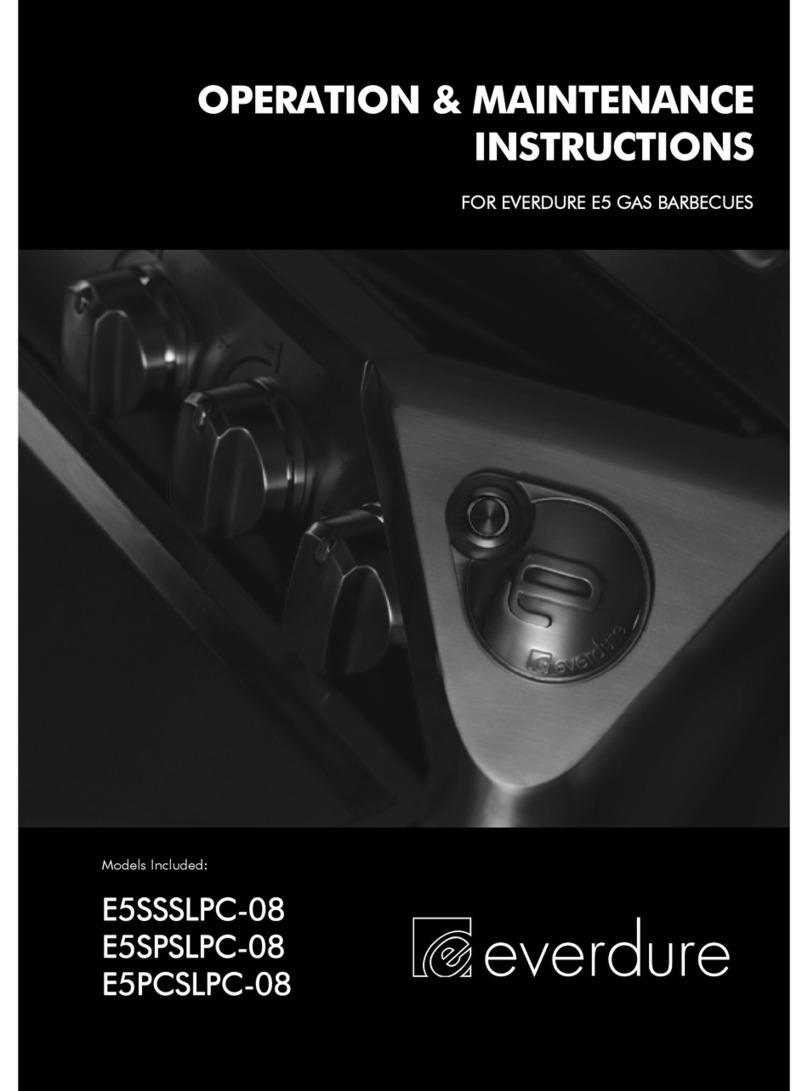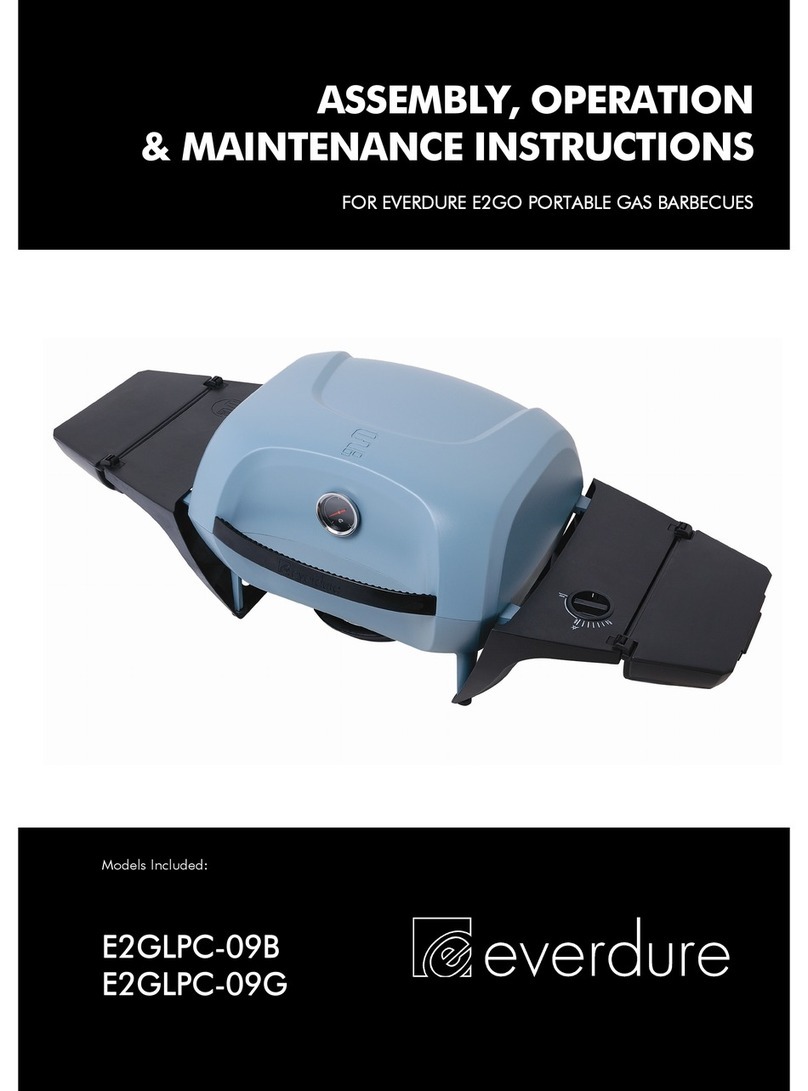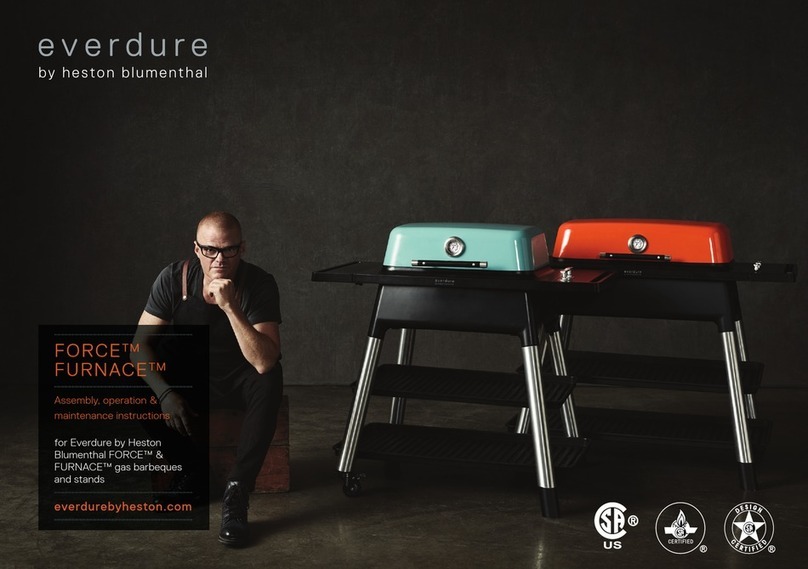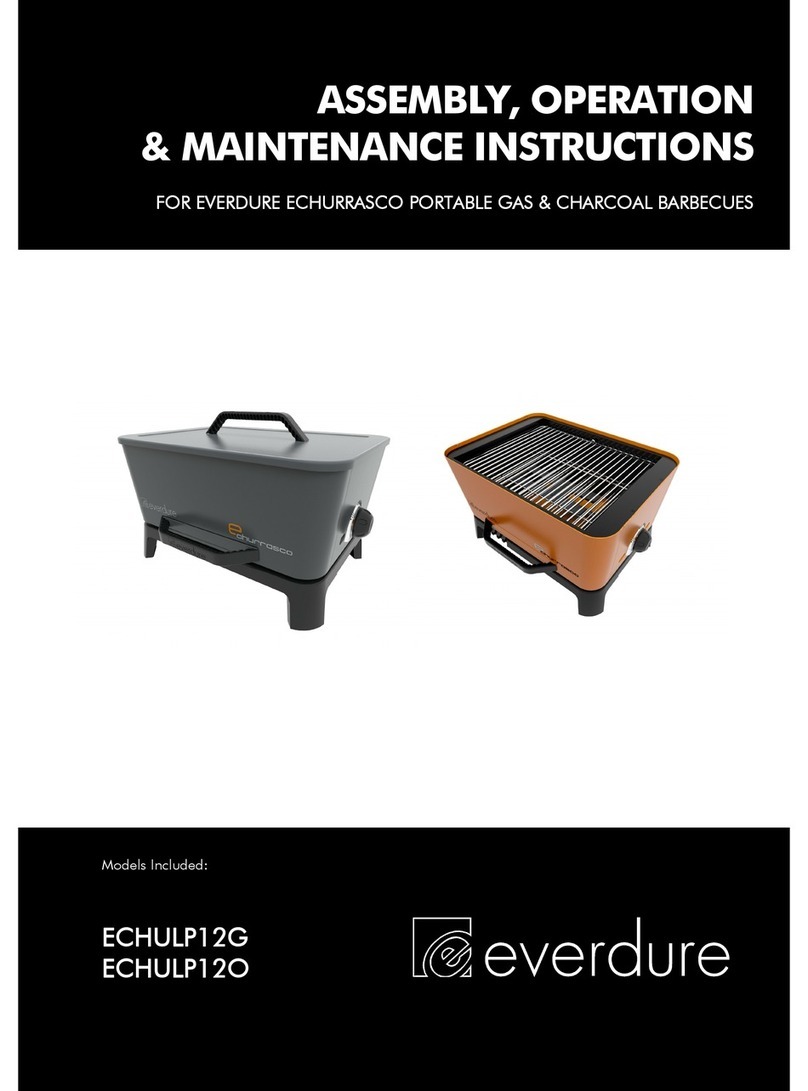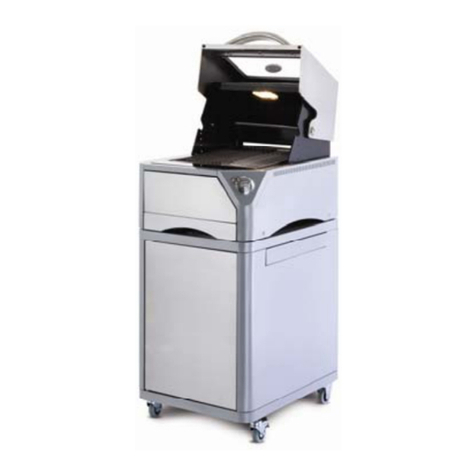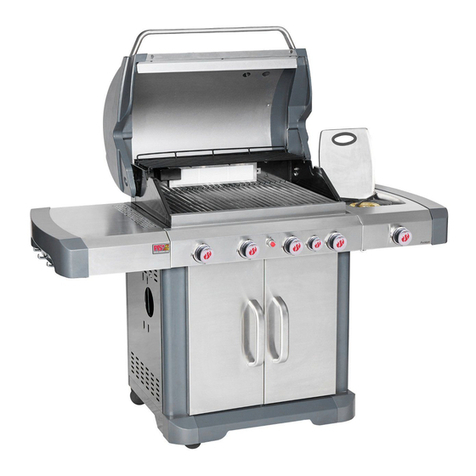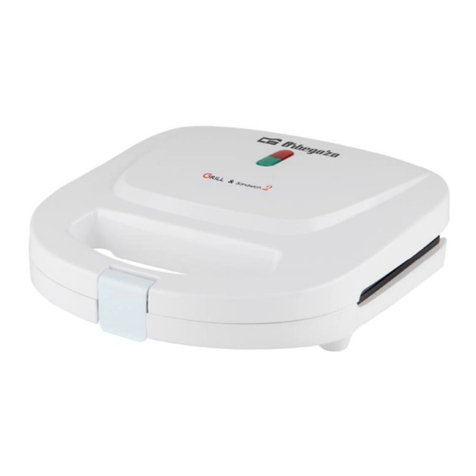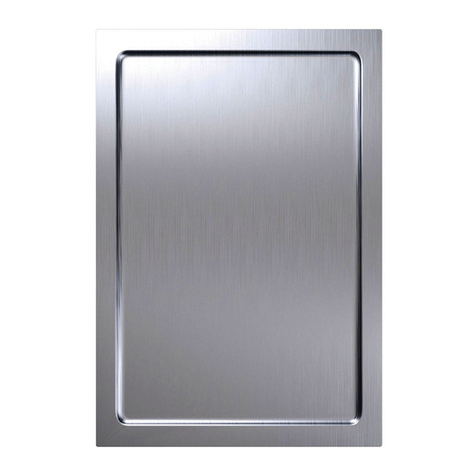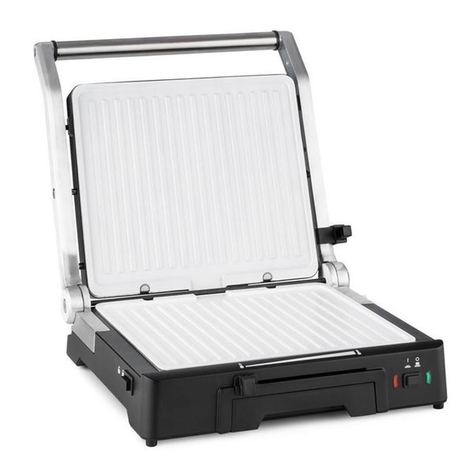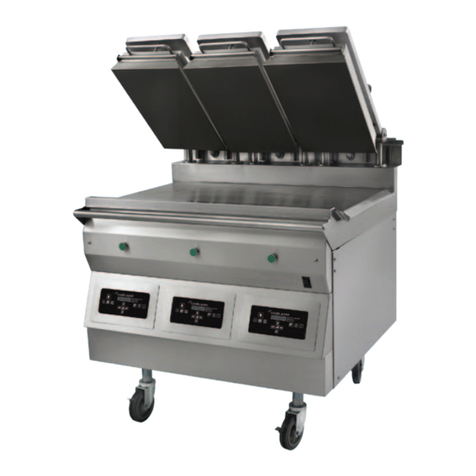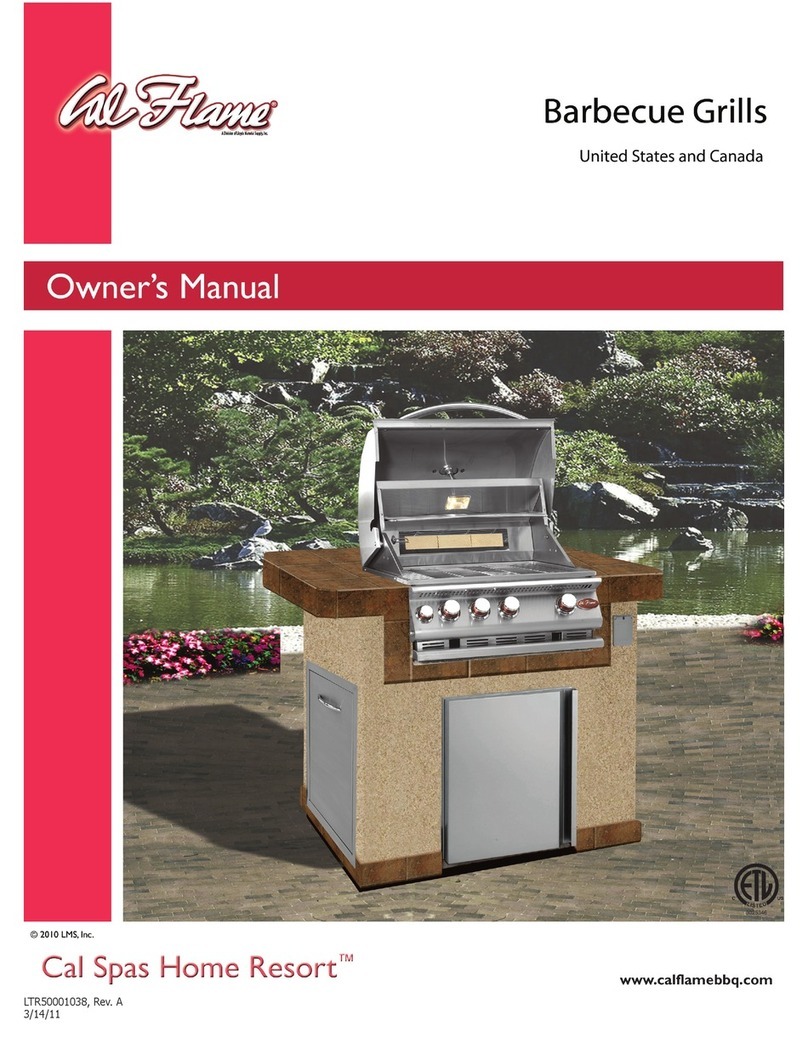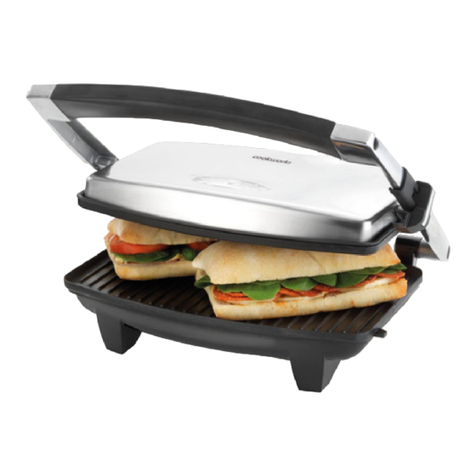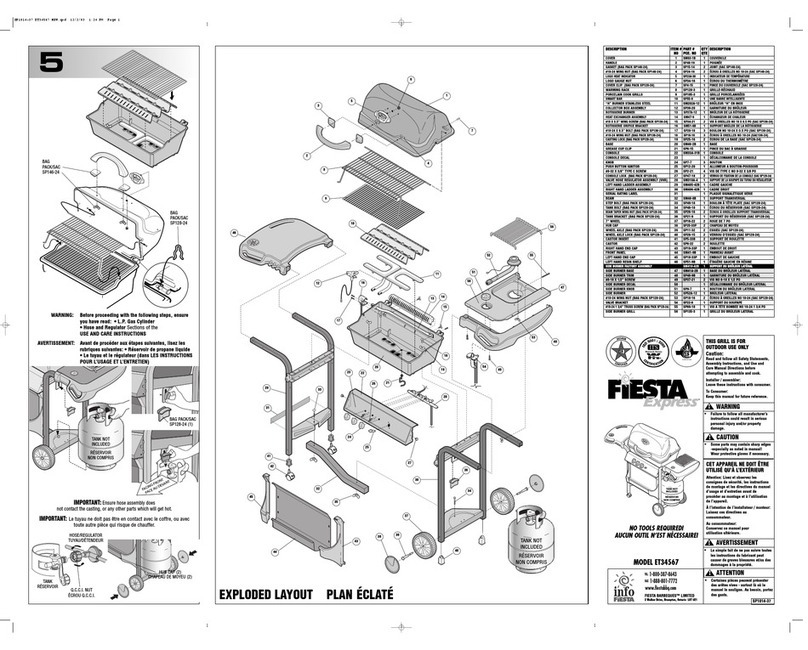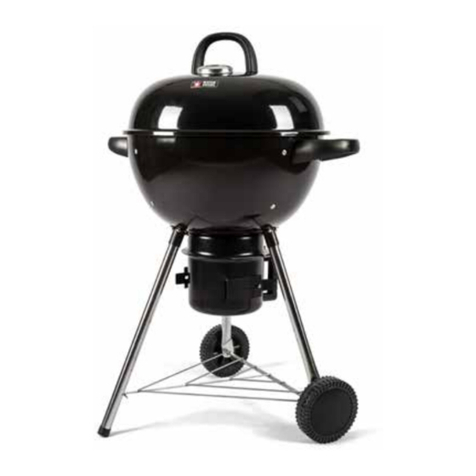OPERATING INSTRUCTIONS
GENERAL INSTRUCTIONS
Follow your eChurrasco barbecue instructions for setting up and ignition of your barbecue. The eChurrasco
roasting hood should only be placed on the eChurrasco open grill once the barbecue is ready for cooking.
Placing the roasting hood onto the barbecue before the solid fuel has ashed will retard the combustion.
The eChurrasco roasting hood has been specifically designed for use with the eChurrasco burning charcoal as
well as for roasting with gas only (note that the smoky flavour will be reduced).
The eChurrasco roasting hood has been designed to fit within the upper lip of the eChurrasco barbecue, and
should always be placed within that area when in use. This allows the charcoal or gas burner to receive fresh
air from the rear vents and between the hood and barbecue, resulting in good combustion of fuel & heat rising
through the roasting hood. Blocking off these gaps will retard both the combustion (potentially causing an
increase in the production of poisonous gases) and cooking times.
ECHURRASCO USING GAS
Once the eChurrasco has been started up as per its ignition instructions, the eChurrasco roasting hood can be
placed on the barbecue. Run the barbecue at high for 5-10 minutes with the hood on before turning the gas
down. Adjust the gas flow to suit the local cooking conditions.
ECHURRASCO CHARCOAL PLACEMENT
The eChurrasco barbecues are designed to operate on Universal LPG for both gas barbecuing and the ignition
of solid fuels. When using charcoal with the roasting hood, there are a number of different ways the charcoal
briquettes can be set up.
a) STANDARD PLACEMENT: The charcoal is left as it was set up at ignition (one layer, 4x6 or 4x7
briquettes, depending on their size). This set-up is best for general roasting where the meat can be
turned over easily during the cooking process, but if left too long in one position can cause burnt food.
b) BANKED TO THE SIDES: Once the charcoal start-up has finished, the open grill is removed and the
briquettes at the centre of the charcoal support rack are removed and placed on top of the ones at the
sides (not outside the designated loading zone). This set-up is best for cooking fatty foods, but helps to
reduce fat fires, as the heat is not generated directly below the meat. It is also the recommended method
for general roasting (with a piece of foil between the meat & fuel source).
c) EXTRA COALS: Extra coals CAN be added to the barbecue once the charcoal start-up has finished and
the gas has been turned off. This can be done to produce more heat, or prolong the cooking time (with
bigger pieces of meat). This method can be especially useful for colder days, or where the solid fuel used
is very slow burning. Do not over-fill the charcoal support rack, as too much heat can burn the outer
areas of the meat, and cause fat & oils to be released faster, increasing the chances of a fat fire.
NOTE: It is very important that the charcoal start-up instructions with gas are followed correctly; always refer to
the ignition instructions supplied to you with the eChurrasco barbecue. After the gas has been turned off, the
charcoal briquette positions can be changed or more briquettes be added. Altering the charcoal start-up
procedure can cause problems with ignition and release excessive amounts of dangerous exhaust fumes. Always
let the briquettes finish ashing (they should be completely white) before adding the meat, so no unwanted
flavours are picked up in the meat.
NOTE: Different charcoal briquettes burn at different rates, depending on their weight, density and consistency,
as well as the ambient conditions (temperature, humidity & wind). Vigilance is essential for the best cooking
result.
NOTE: The following sections are a cooking guide only, due to the variables listed above, the differences
between different types of meat and personal taste. Everdure recommend that you take the time to experiment
with the different cooking methods to determine what best fits your cooking style and environments.
NOTE: Small amounts of fats and oils falling on the charcoal briquettes is what gives the meat the flavour
everyone enjoys. Too much over too short a time however is one of the main causes of fat fires, something best
avoided as it can easily ruin the meat. Marinades CAN be added, especially ones with little oil, during the
cooking process to enhance the flavour of the meat. Add oils or fats sparingly (if at all) during the cooking
process if the meat looks like it’s beginning to dry out.
NOTE: Fresh herbs can be placed on the charcoal during the cooking process to give the meat extra flavour.
5
